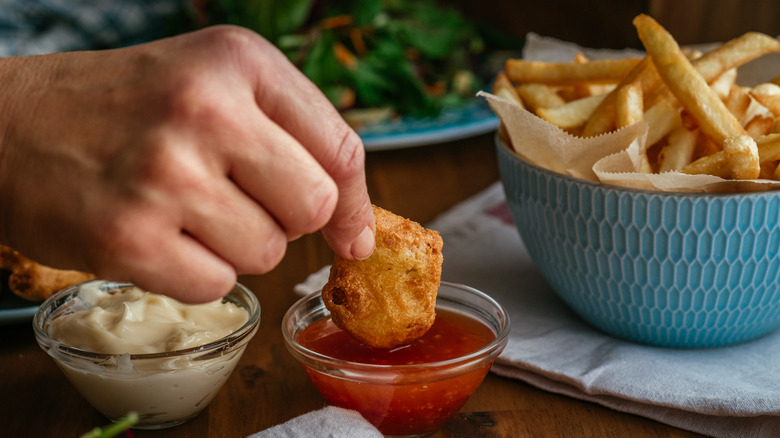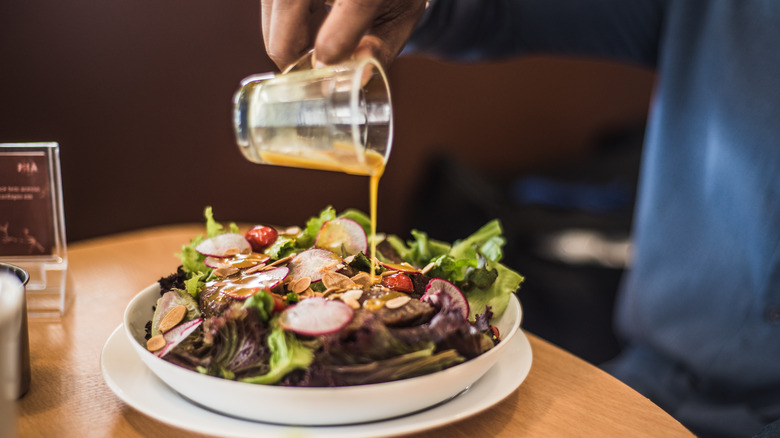Here's What 'SOS' Actually Means At A Restaurant
Even on busy mornings, afternoons, and nights, restaurant kitchen staff know that "SOS" isn't a distress signal. Rather, this shorthand is vital in communicating a particular customer's preference regarding condiments. SOS merely indicates that a patron asked for their sauce on the side.
When an order ticket reads "SOS," the customer has requested their sauces or condiments (which are not the same, by the way) to be served separately, allowing them to control the amount and distribution. This can be crucial for those with dietary restrictions or persnickety tastes. For example, someone following a gluten-free diet may want to avoid cross-contamination with condiments containing wheat. Whether it's mustard, ketchup, mayo, a special housemade dip, relish, or dressing, offering it on the side ensures folks can enhance their dining experience to their liking.
In the fast-paced environment of a restaurant kitchen, understanding and fulfilling SOS requests efficiently is a testament to a well-trained and attentive staff. It requires effective connections between the front of the house (FOH) and the back of the house (BOH), through which details are accurately conveyed to the cooks and executed with precision.
SOS means sauce on the side
Restaurant lingo contains many abbreviations with alternate meanings in the larger world. Take, for example, "GBD," which can signify the Civil Air Patrol title Ground Branch Director. GBD also indicates "golden, brown, and delicious," specifically when it comes to fried foods. Others are customer-facing and easily recognizable. "DF" may appear on a menu or ticket, signaling that an item is dairy-free or non-dairy. This symbol is especially appealing to individuals who are lactose intolerant or allergic to dairy.
Clear communication confirms palates are taken into account during food preparation. Using concise, universal language streamlines the ordering process. Beyond dietary preferences, abbreviations and acronyms aid in describing cooking preferences. "MR" designates a request for a steak to be cooked medium rare, while "WD" specifies a well-done slice of beef.
As servers speedily scribble orders, this shorthand saves both time and energy. Then, as the meals are prepared in the BOH, the translation is unmistakable — at least, ideally. In the fast-paced hospitality industry, this gastronomic lexicon reduces errors and contributes to overall productivity. Most importantly, it's a small gesture that speaks volumes about a restaurant's commitment to customer satisfaction.

